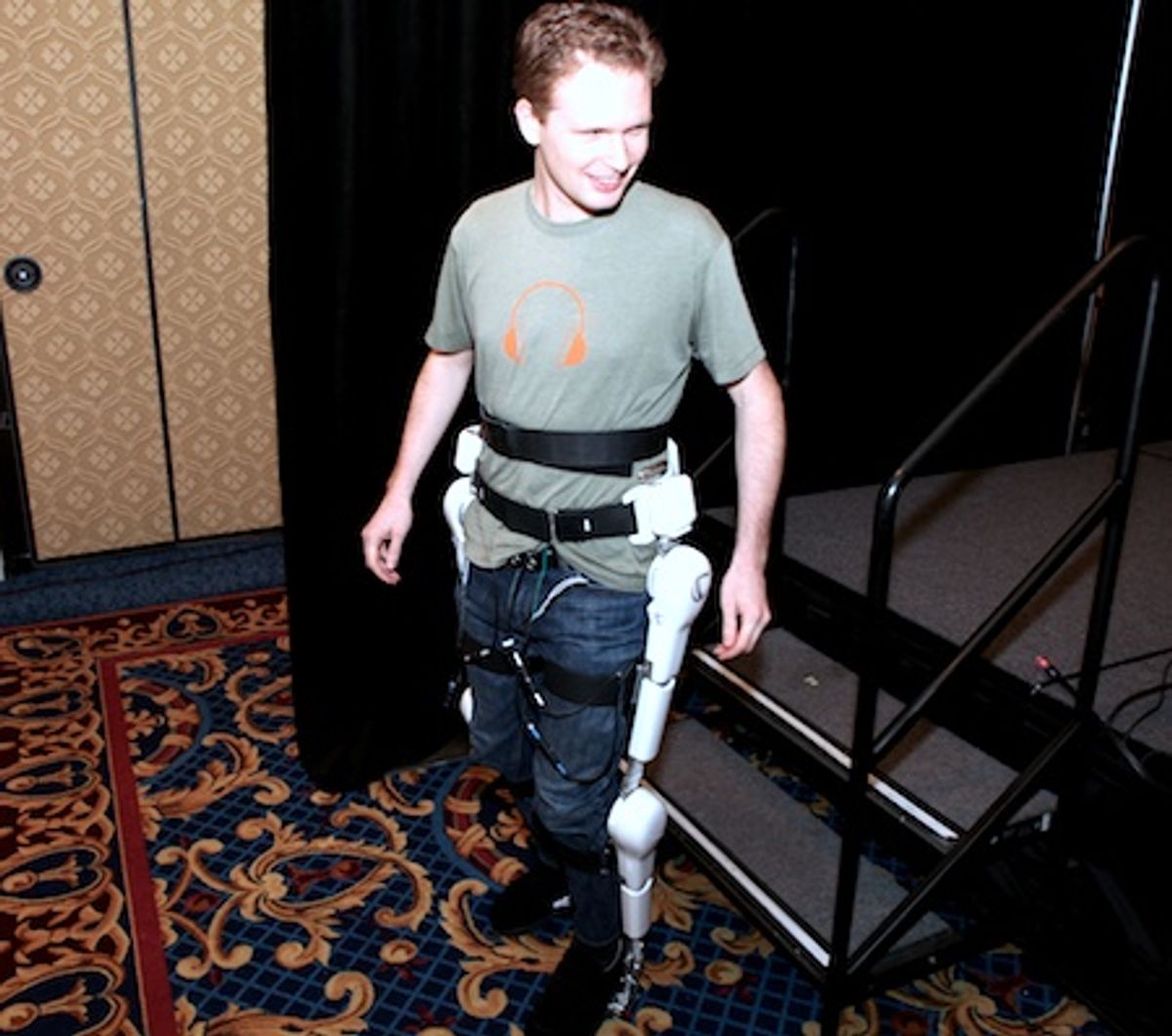A man turned into a cyborg yesterday at the Consumer Electronics Show in Las Vegas when he stepped into a powered robot suit that moved in response to nerve signals in his legs.
Technology journalist Evan Ackerman became the first person in the United States to test the robotic exoskeleton Hybrid Assistive Limb, or HAL, created by Japanese company Cyberdyne [see photo above].
Several companies and labs in the United States and Japan are developing robot suits to help disable and elderly people regain more mobility -- or to give soldiers super human strength.
Professor Yoshiyuki Sankai, head of the Cybernics Lab at the University of Tsukuba, founded Cyberdyne to commercialize the suit, which he started developing more than a decade ago.
The HAL suit, which weights 10 kilograms, consists of a lightweight frame that straps to the body. Its electric motors act as artificial muscles that provide powered assistance to the wearer's limbs.
Cyberdyne has publicly demonstrated its exoskeleton several times but previously only the company's engineers or patients were allowed to wear the robot suit.
At yesterday's demo, Ackerman got a taste of the future by becoming a man-machine hybrid. Though the tried just the robot legs (the company also makes a full suit includes powered arms), he said the experience was "incredible."
Watch:
To use the suit, Cyberdyne employee Takatoshi Kuno first attached sensors to Ackerman's legs. The sensors monitor the electrical activity of nerves to control the suit's dc motors.
The suit works on intent: the user needs only to "think" of moving his or her legs -- the suit does the rest. That's because the brain sends signals to the muscles of the legs, and the sensors detect them.
"Once I figured out how to stop trying to walk in the suit and just let the suit walk for me, the experience was almost transparent," Ackerman said.
The suit includes a pouch with a computer, Wi-Fi card, and battery, and it sends data about its operation to a remote PC. Cyberdyne's Kuno said he set the suit on "level 1," because Ackerman's legs had normal strength; for people with weaker muscles, the suit could go to level 4.
Ackerman walked around the room and also climbed stairs to go up and down the stage. At first he appeared to struggle to move its legs, but after just a few minutes he was feeling comfortable in his new robot body.
"I didn't try to kick anything to pieces Iron Man style," Ackerman said, "but going up stairs was definitely all the suit doing the work and not me."
Photos: Joe Calamia/IEEE Spectrum
For more gadget news, check out our complete coverage of the 2011 Consumer Electronics Show.
Joshua J. Romero is a software developer and journalist. A former IEEE Spectrum senior editor, he holds a bachelor’s degree in astronomy and physics from the University of Arizona and a master’s in journalism from New York University.





